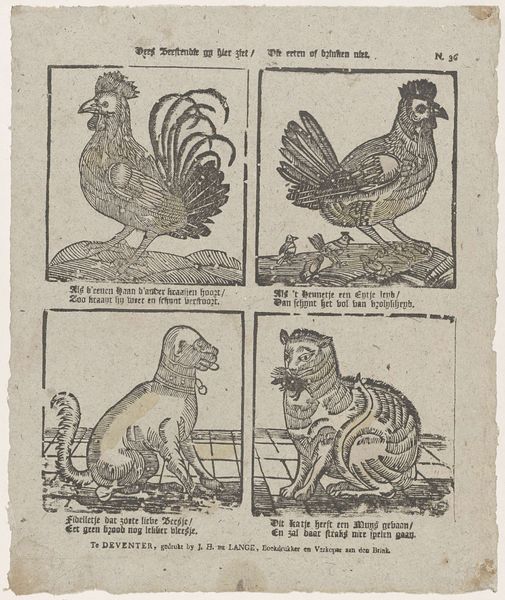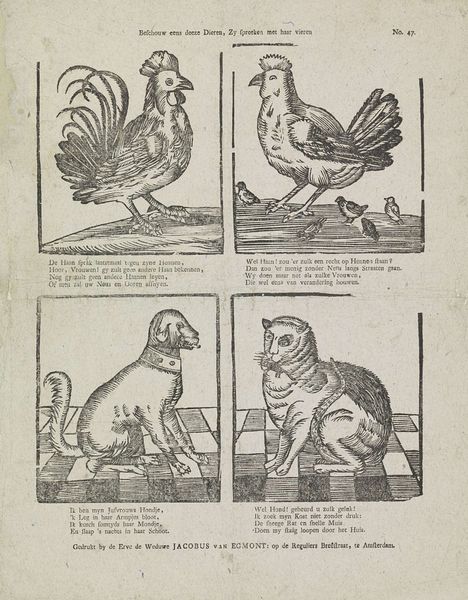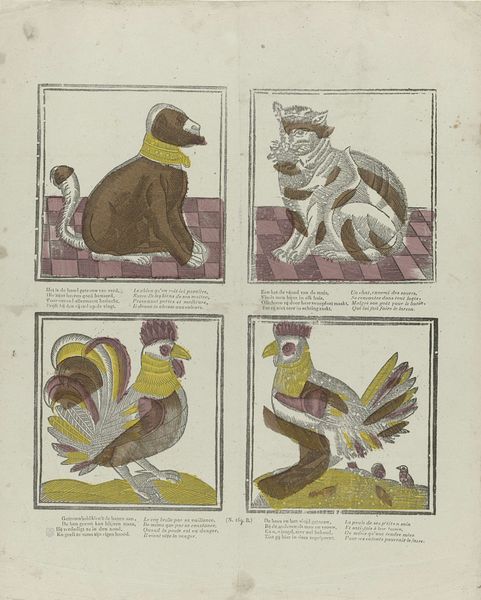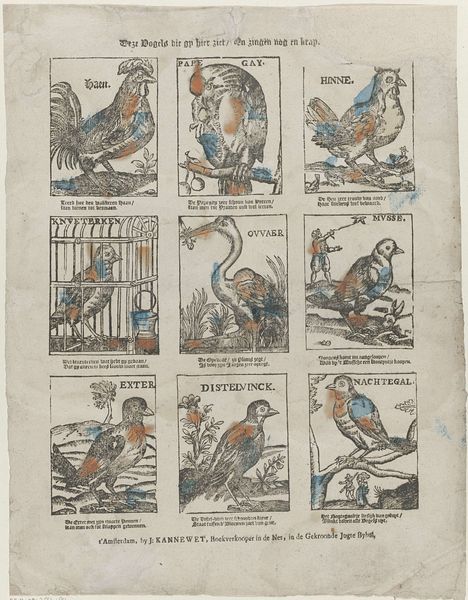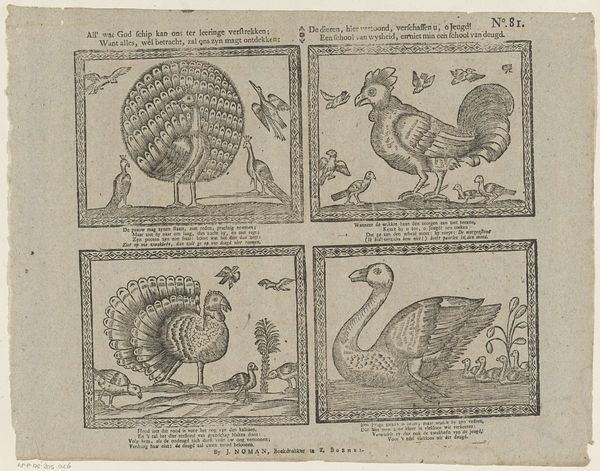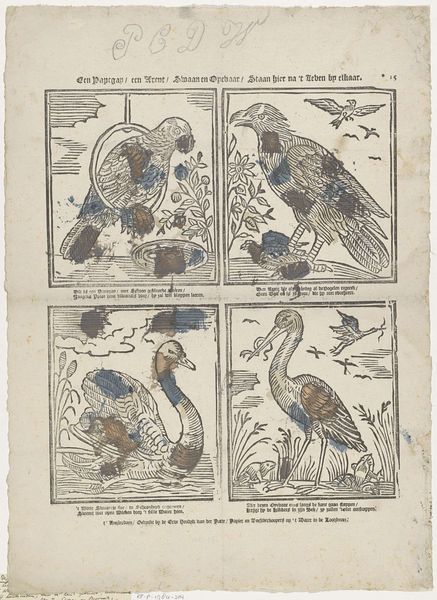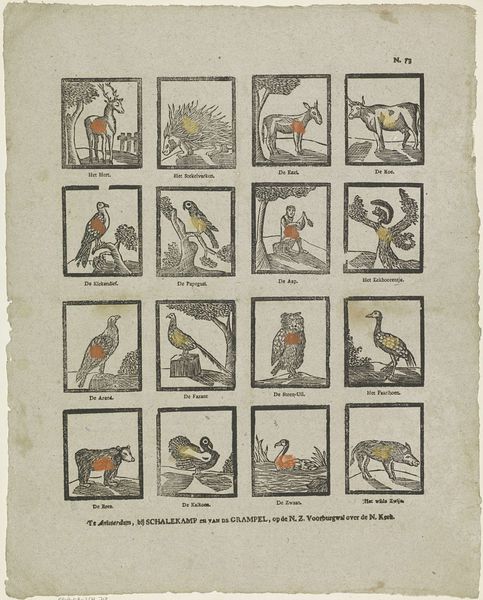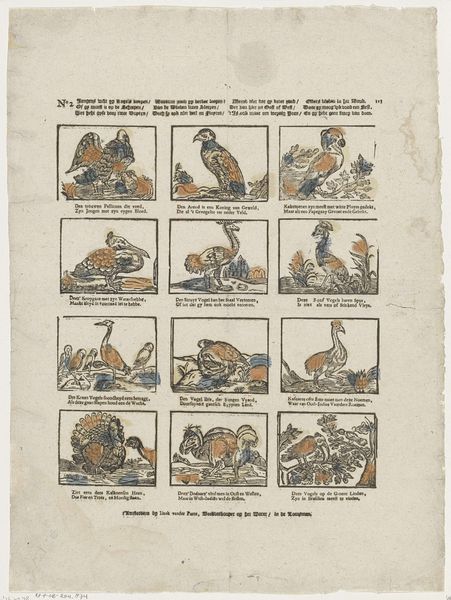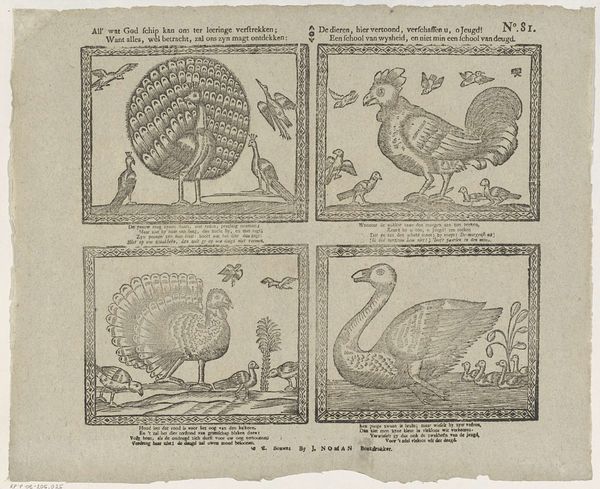
De haan zal 's morgens vroeg het huisgezinopwekken, / Het hennetje zal met eyers voen het huys, / En 't hondje zal de pot, en schotels schoontjes lekken, / En 't katje dat verjaagt en vangt de rot en muys 1806 - 1854
0:00
0:00
print, woodcut
# print
#
dog
#
figuration
#
folk-art
#
woodcut
#
genre-painting
#
northern-renaissance
Dimensions: height 408 mm, width 325 mm
Copyright: Rijks Museum: Open Domain
Editor: This is a woodcut print by Erve H. Rynders, created sometime between 1806 and 1854. It depicts a rooster, hen, cat, and dog, each in their own little vignette. I'm immediately drawn to the seeming simplicity and charm of it, but also struck by how clearly defined their domestic roles are within the household. What do you make of this piece? Curator: I'm glad you picked up on the explicit roles. These aren't just pretty animals; they're actors in a deeply ingrained social drama. Consider the text accompanying each image; it directly ascribes specific duties based on gender and species. How might we view this through a feminist lens, thinking about the construction of labor and value within the domestic sphere? Editor: It's like each animal is assigned a task that benefits the patriarchal structure of the home; the rooster 'awakens' the family (implying men), the hen 'provides' (eggs as commodity), the dog cleans, and the cat keeps pests away, which preserves food for sale or trade. Is this reading too far into it? Curator: Not at all. In fact, you're highlighting a key aspect of folk art of this period. These images, while seemingly simple, often reinforced social norms and power dynamics. What's particularly interesting is the implied economic value associated with each creature’s labor. Could we consider how this print functions as a visual representation of early capitalist values within the family unit? How does it affect your view on it? Editor: I hadn’t considered the capitalist angle, but I can definitely see how that adds another layer. Each animal has a "job," contributing to the household’s "productivity." It takes away the "charm" somewhat. Curator: Exactly. By situating this artwork within its historical and social context, we can unearth its deeper meanings and interrogate the messages it conveys about gender, labor, and economics. The simple presentation hides a reinforcement of potentially harmful standards of behavior, expectations of gender roles, and normalization of economic exploitation. It is good food for thought!
Comments
No comments
Be the first to comment and join the conversation on the ultimate creative platform.

